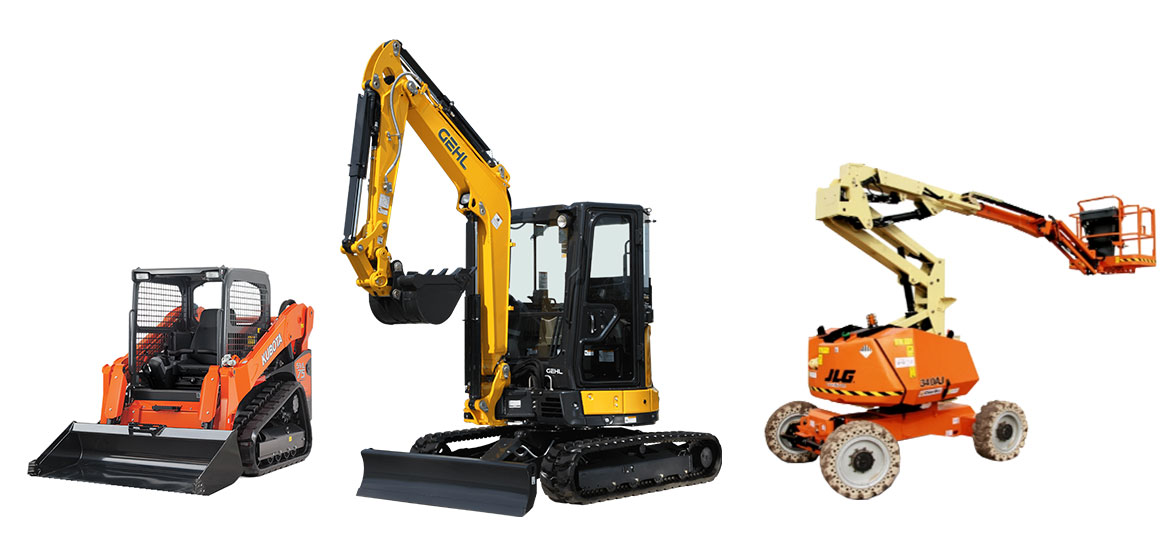Aerial Lift Rental: Versatile Training Solutions for High-Access Jobs
Aerial Lift Rental: Versatile Training Solutions for High-Access Jobs
Blog Article
Maximize Your Budget Plan by Recognizing the Prices Related To Construction Tools Leasings
Understanding the complete range of expenses linked with building tools rentals is critical for maximizing your spending plan. What methods can be employed to efficiently take care of these costs and make sure an extra reliable rental experience?
Overview of Rental Costs
When thinking about building equipment leasings, comprehending the linked expenses is vital for reliable budgeting and job preparation. Rental prices can vary significantly based on numerous aspects, including devices type, period of leasing, and area. The preliminary rental fee often mirrors the devices's market need and its connected functional capabilities, affecting the general expenditure.
In addition to the base rental price, ancillary prices might develop, such as transportation charges, gas surcharges, and upkeep costs. It is crucial to account for these added expenses to precisely analyze the complete cost of leasing tools. Additionally, the rental duration can impact prices; longer rentals may get approved for affordable rates, while short-term leasings could incur higher everyday costs.

Failure of Rental Prices
A comprehensive understanding of rental rates is important for professionals and project supervisors aiming to enhance their budget plans. Rental rates for building equipment normally are composed of several components, including base prices, time-based costs, and use costs.
Base prices are the core fees related to the service of the tools, frequently identified by the type and dimension of the equipment. These rates can vary substantially, affected by elements such as equipment need, schedule, and regional market patterns. Time-based fees, which may be daily, weekly, or monthly, offer to fit different project timelines and rental durations.
In addition, rental prices may consist of use fees, which are appropriate when equipment is utilized past a specified limit, making certain that the rental business can represent deterioration. Seasonal demand variations can likewise influence rental rates, with peak construction seasons typically regulating higher rates.
Additionally, comprehending the rental business's policies pertaining to maintenance and insurance can give additional understanding right into the general expense structure. By examining these parts, contractors can make enlightened choices, making certain the option of rental tools straightens with both task needs and spending plan restraints.
Added Fees to Think About
Recognizing the intricacies of additional charges is vital for professionals to handle their total service expenses efficiently. Beyond the common rental rates, various extra costs can dramatically impact the total cost of devices leasing. These charges usually consist of distribution and pick-up fees, which can differ based on distance and logistics involved in transferring the devices to and from the job website.
In addition, some rental firms might enforce fuel surcharges lifting bags construction if the equipment is returned with less fuel than when rented out. It is additionally essential to recognize prospective cleaning fees, particularly for specialized tools that calls for detailed maintenance after use.

Completely reviewing the rental agreement and clarifying these added charges in advance can help service providers avoid unexpected prices and make sure that budgets continue to be undamaged throughout the project lifecycle.
Repair And Maintenance Expenses
Routine maintenance and repair expenditures are typically neglected variables that can substantially influence the overall price of building equipment leasings. When renting devices, it is important to consider not just the rental costs however additionally the prospective prices related to maintaining the machinery in optimum operating condition.
Lots of rental firms include standard upkeep as part of the rental contract; nonetheless, much more considerable repair services or unforeseen failures can cause additional costs. It's vital to evaluate the rental agreement meticulously to understand what maintenance solutions are covered and what obligations drop on the occupant.
Furthermore, equipment that is not well-kept can bring about inadequacies on the task website, possibly raising and triggering delays job costs. To reduce these dangers, it is suggested to conduct routine assessments and read what he said preserve open interaction with the rental copyright regarding any issues that develop throughout usage.
Insurance Coverage and Responsibility Prices
Insurance policy and responsibility costs are essential elements that can considerably influence the general expenditure of construction equipment services (heavy equipment rental). These expenses ensure that both the rental company and the customer are shielded from potential economic losses arising from crashes, damages, or burglary throughout the rental period

Furthermore, clients must be conscious of any kind of deductibles or exclusions in the insurance plan, as these can influence possible out-of-pocket expenses. Recognizing the conditions of any kind of insurance protection is important to avoid unanticipated expenses. Inevitably, budgeting for insurance and liability expenses can help make sure a smoother rental experience and protect against economic risks linked with building and construction projects.
Final Thought
In final thought, an extensive understanding of the costs connected with construction equipment services is essential for effective budget plan monitoring. Eventually, notified decision-making concerning equipment rentals adds to the general success of building endeavors.
Rental costs can differ dramatically based on numerous aspects, including devices type, period of leasing, and location (aerial lift rental). The rental duration can impact pricing; longer services might qualify for discounted rates, while temporary leasings might sustain greater daily costs
By carrying out extensive research and involving with trusted rental companies, service providers can successfully navigate the intricacies of rental pricing, inevitably optimizing their financial sources.
Beyond the typical rental rates, numerous extra fees can significantly affect the overall expense of tools leasing. Rental business typically provide obligation insurance that covers injuries to 3rd parties or damages to home, while tools damage insurance policy can cover the cost of fixings or replacement if the rented out equipment is damaged.
Report this page